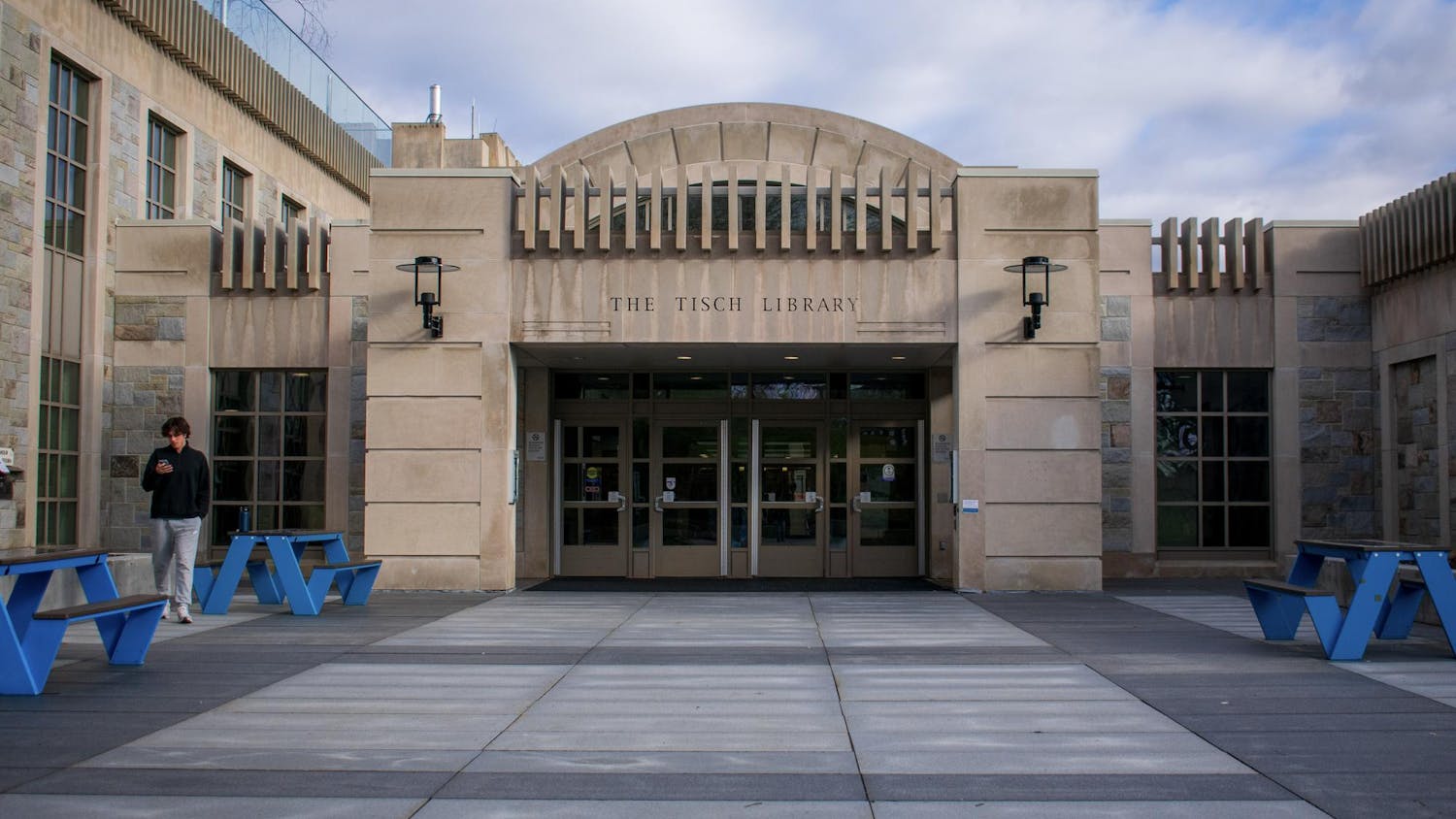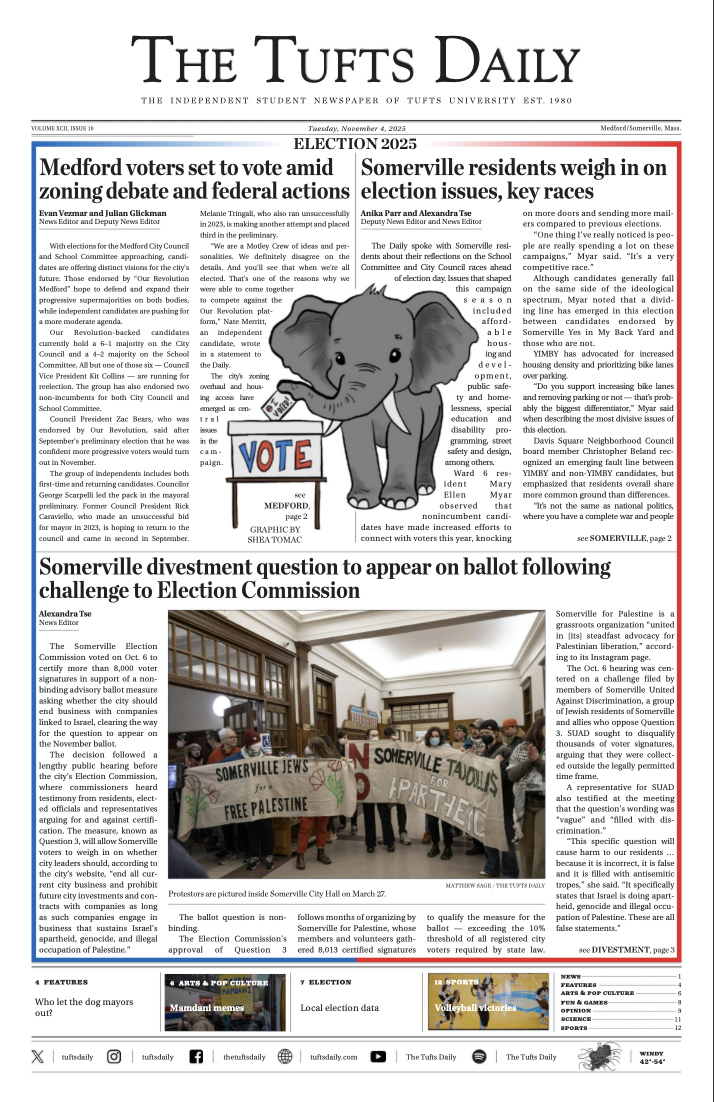Amid the chaos of the 2024 presidential election, the Museum of Fine Arts Boston presents “Power of the People: Art and Democracy.” The exhibition showcases diverse perspectives on democracy as explored through works of art and highlights the promise, the practice and the presentation of democracy from ancient Greece to the present day. The Daily had the opportunity to speak with Phoebe Segal, Mary Bryce Comstock senior curator of Greek and Roman art, about the curation of this exhibit and the role of visual art in politics.
Editor’s note: This interview has been edited for length and clarity
Tufts Daily (TD): What was the inspiration for this exhibit? What did the curation process look like?
Phoebe Segal (PS): We opened new galleries of Greek and Roman art at the end of 2021. And when we were preparing for that project, we were thinking a lot about connections between ancient civilizations and our time. One of the subjects that kept coming up was our political system. It was something that was kind of gnawing at me, and this was a way to really explore how ideas about democracy have been embedded in visual art since the first democracy that we know about, which is ancient Athens founded at the end of the sixth century B.C.
TD: Historically, how was art used to promote democracy or demonstrate resilience?
PS: One of the things that I looked at were the stories that we tell about how democracy has come to be. We see this all the time with public sculpture in our country, about the stories that are told in public monuments and how they often gloss over or just completely upend what happened in service of the narratives that powers that be want to tell. A lot of the show is about these ideal visions of democracy and also how artists have pushed back on those and complicated those stories through their work.
TD: Sometimes there is a fine line between expressing ideas of a political system and influencing how people feel about a political entity. What do you think is the difference between those two?
PS: It’s dependent on who the patron of the work is and who the audience is. This show is first and foremost a platform for what I call “visual arguments” about and in relation to democracy because they’re putting forth their ideas. Some of those ideas are responding to a particular patron, like a state that wants to create a monument, or a private patron creating a portrait of a citizen. There’s also work where the artist is expressing their own personal view, like their own take on something. And then there’s also examples — and we have several examples of this in the show — where artists are coming together in collectives to raise awareness about particular social issues that are important to them. So it really is dependent on who’s making it and for whom and why.
TD: Are there any local artists from the Boston area in this exhibit?
PS: There are a lot of Boston area artists in the show. Of the 180 works of art, all but 10 of them are from the MFA’s collection. Because we are the major encyclopedic museum of Boston, and because Boston was one of the homes of the American Revolution and a center for the abolitionist movement, the collection supports those topics very well. One of the main artists represented in the show is Tomashi Jackson, who has a mid-career survey at the Tufts University art gallery right now. Her painting, which is called “Contradiction” is actually in the introduction to the show because it is one of the most important pieces.
TD: What do you think is the role of art museums and exhibitions such as this in the sphere of politics, especially during an election year?
PS: The museum is a place of civic learning, and many of us are visual learners. I think that the show and the museum, even when the show has disbanded, really provide an opportunity for people to build their civic awareness through deep engagement with objects. They have so much to tell us, and they not only inspire our imaginations but prompt us to ask: “How can we do better? What is our role?”
TD: What do you hope visitors will take from this exhibit?
PS: I just hope that it makes them think and talk to their friends and families and makes them think about their responsibilities. I think looking at history helps us feel less alone, and that can help us feel hopeful for the future. I worked with the MFA teens program, and they selected objects and wrote labels for the show. We also had a roundtable with MFA pathways interns, who are college students, and some graduate student interns. So we had a lot of input from teens and young adults, and I really hope that people from Tufts will come see the show and see themselves reflected in it.
“Power of the People: Art and Democracy” is open at the Museum of Fine Arts Boston through Feb. 16.






